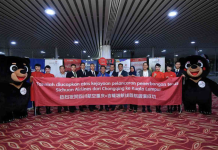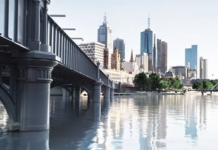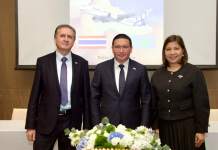BANGKOK, 14 November 2025: Airline chief executives and senior leaders of the Association of Asia Pacific Airlines (AAPA) gather in Bangkok today, Friday 14 November, for the opening session of the association’s annual Assembly of Presidents, a two-day event, hosted by Bangkok Airways.
Themed “Bolstering Supply Chains and Manpower Resilience for a Sustainable Future,” the 69th edition of the prestigious assembly provides a critical platform for airline leaders across the Asia Pacific region to review industry performance, exchange insights, and address key operational and strategic challenges shaping the sector’s trajectory.

Industry outlook
Since 2022, air travel demand in the Asia Pacific region has demonstrated continued resilience, with international passenger traffic expanding by 10% during the first nine months of 2025. While the outlook for 2026 remains positive, growth is expected to align more closely with long-term historical trends. Passenger load factors remain elevated due to constrained capacity growth, as the industry continues to face an estimated global shortfall of more than 5,200 aircraft deliveries in 2025.
Maintenance and repair operations also face significant bottlenecks, with extended turnaround times driven by shortages of components and a skilled workforce. Meanwhile, the availability of sustainable aviation fuel (SAF) remains nascent, with production volumes far below the levels required to support the industry’s decarbonisation targets.
Global trade and supply chain pressures
For the second consecutive year, supply chain constraints and workforce resilience remain dominant themes at the assembly, compounded by renewed trade tensions and tariff measures that threaten to increase operational costs and disrupt the free flow of aviation goods and services.
Commenting ahead of the event, Association of Asia Pacific Airlines Director General Subhas Menon said: “The introduction of new tariffs at a time when global supply chains are still in recovery represents a setback for the aviation sector. Tariffs elevate supplier costs and undermine the principles of free trade on which global aviation supply chains are built. While passenger and cargo demand remains strong, persistent supply challenges could restrict airlines’ ability to meet the expectations of travellers and businesses alike. The air freight market, in particular, stands to be directly affected by escalating trade tensions in the months ahead.”
Sustainability and fleet modernisation
Menon further noted that supply chain disruptions also hinder the industry’s sustainability transition, as ongoing delays in new aircraft deliveries slow fleet renewal and extend the operational life of older, less fuel-efficient aircraft — potentially increasing the industry’s overall carbon emissions footprint.
“The Assembly serves as a vital forum for the region’s aviation leaders to discuss the current state of the industry and to chart a sustainable and resilient path forward,” Menon concluded. “Despite the challenging macroeconomic environment, the robust demand for air services, combined with the region’s strong economies and favourable demographics, continues to underpin optimism for the Asia Pacific aviation sector in the year ahead.”
(Source: AAPA)






